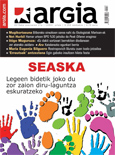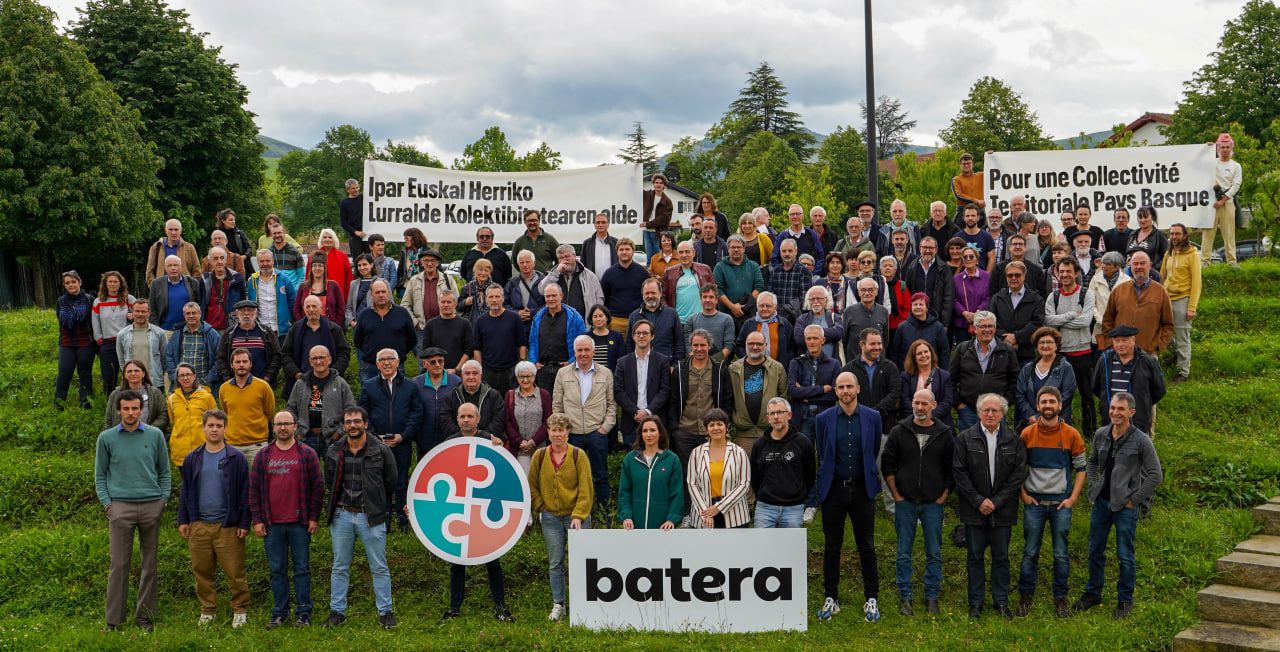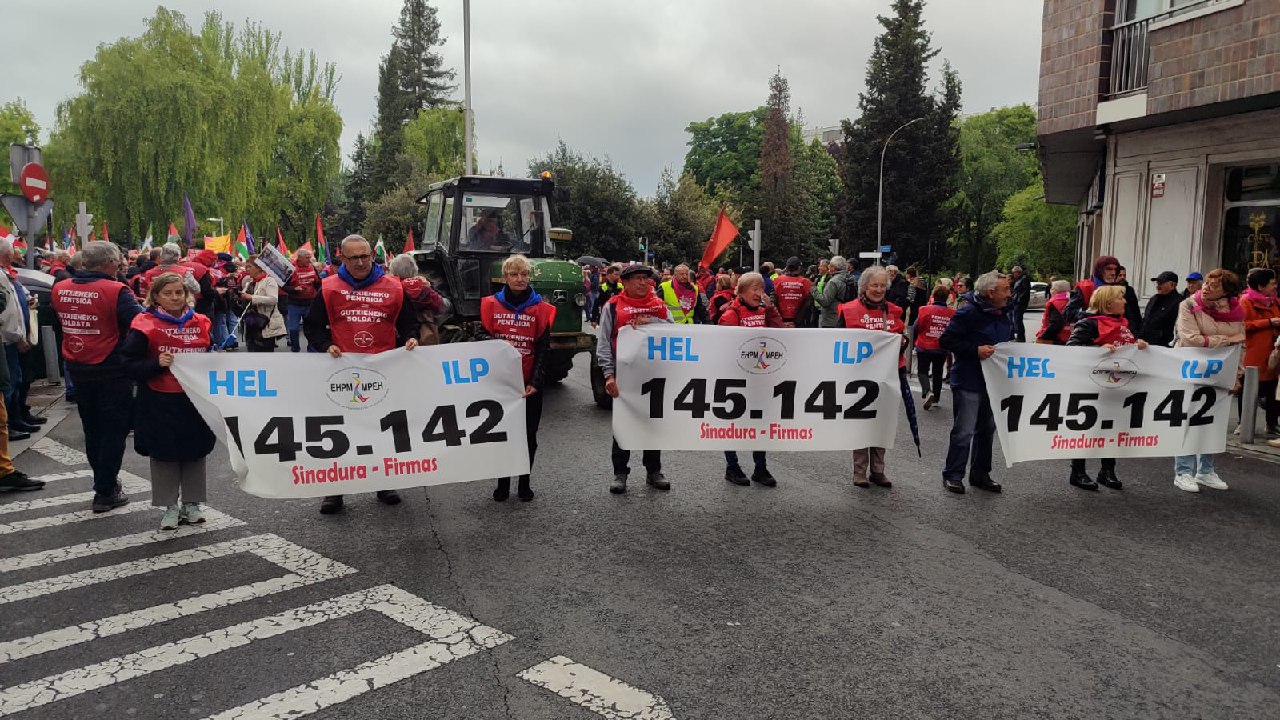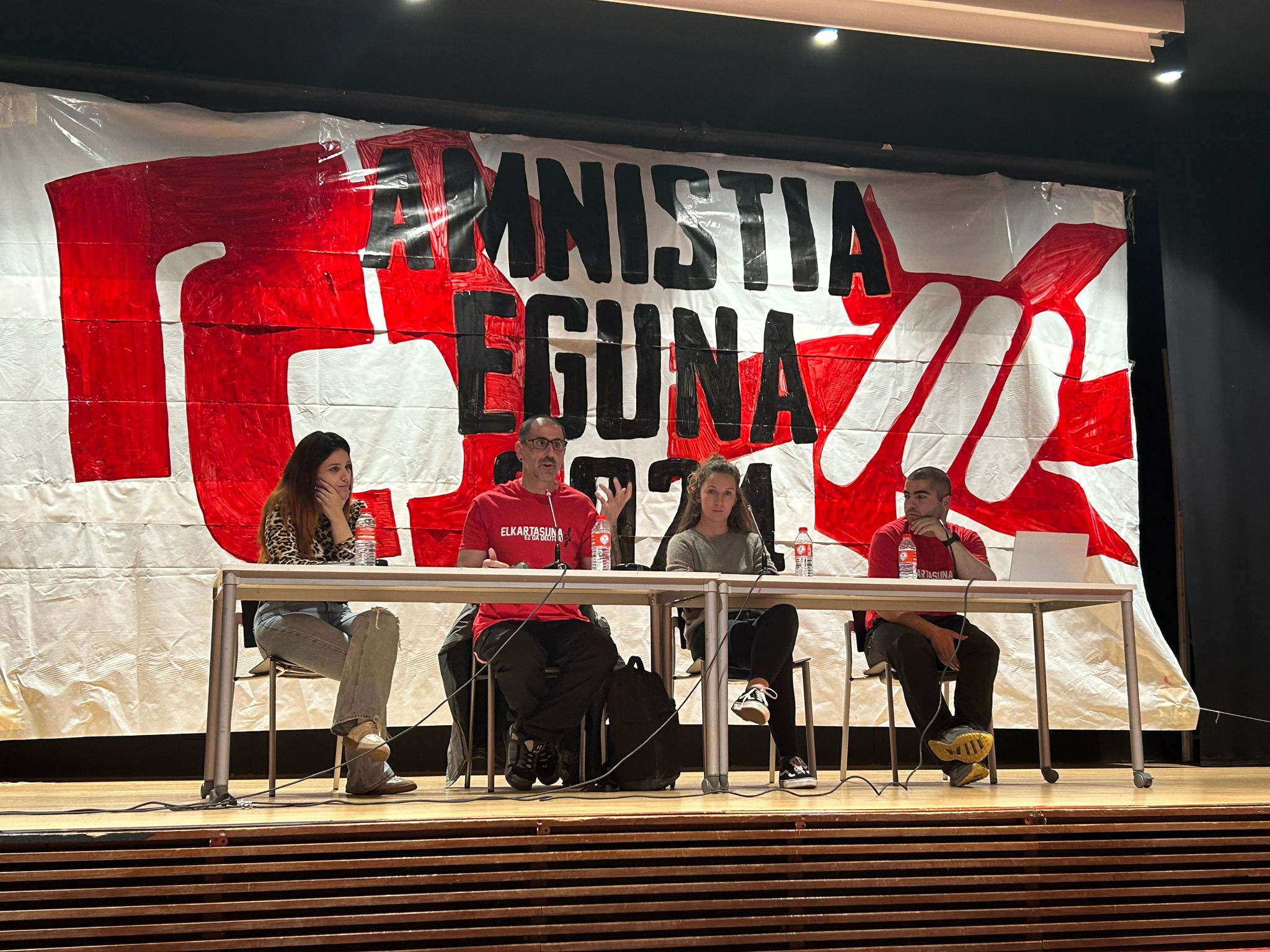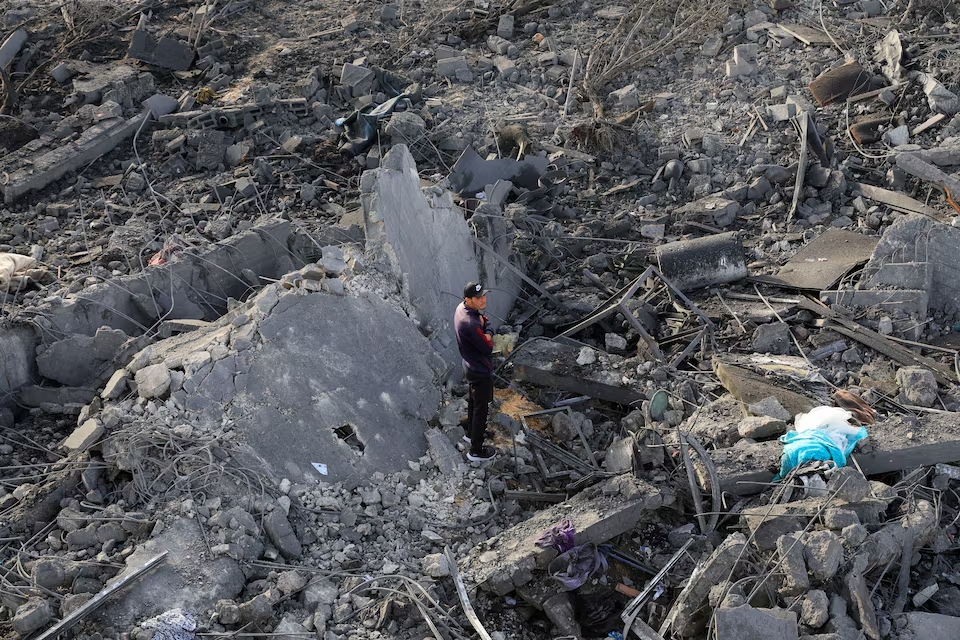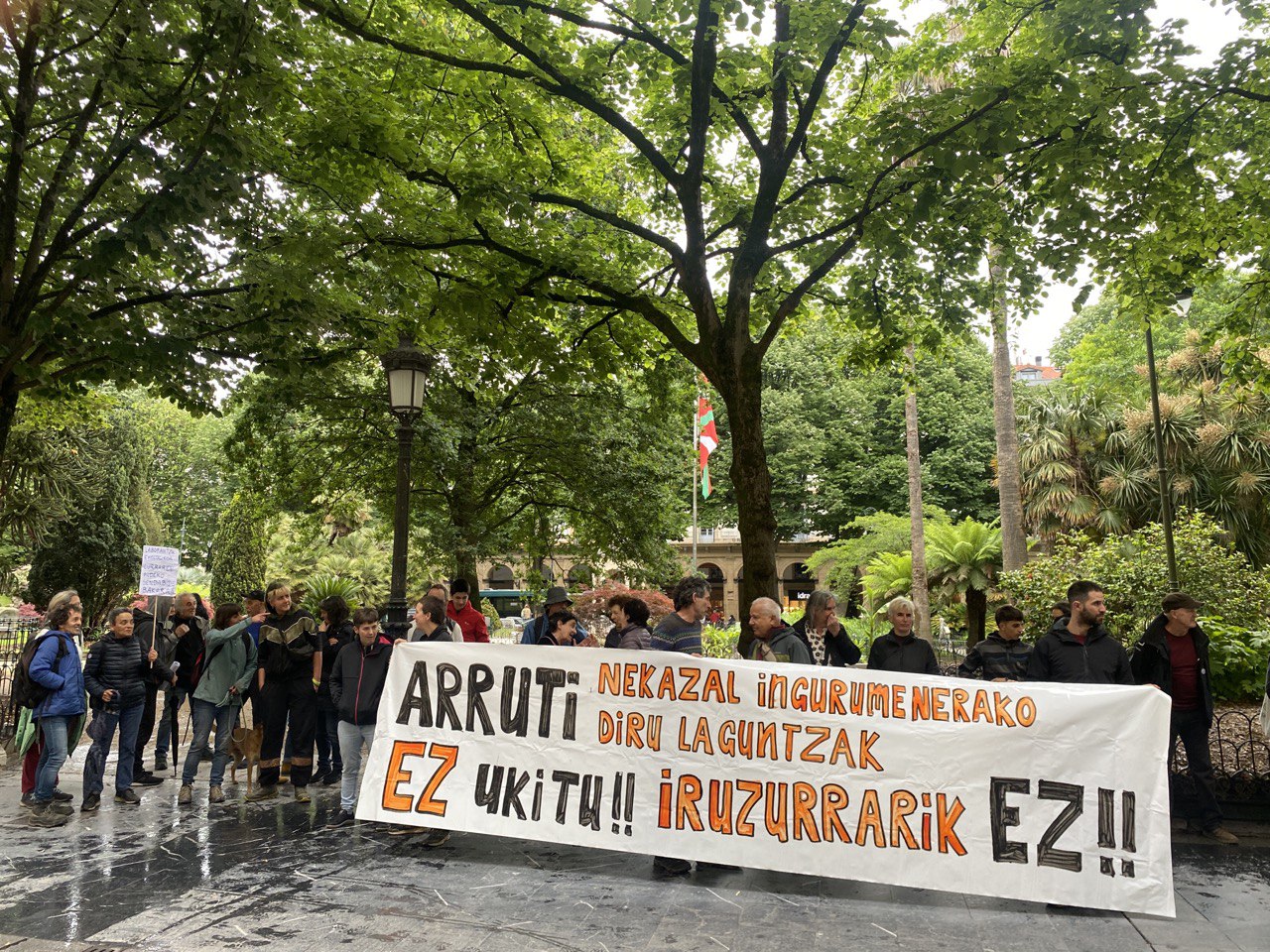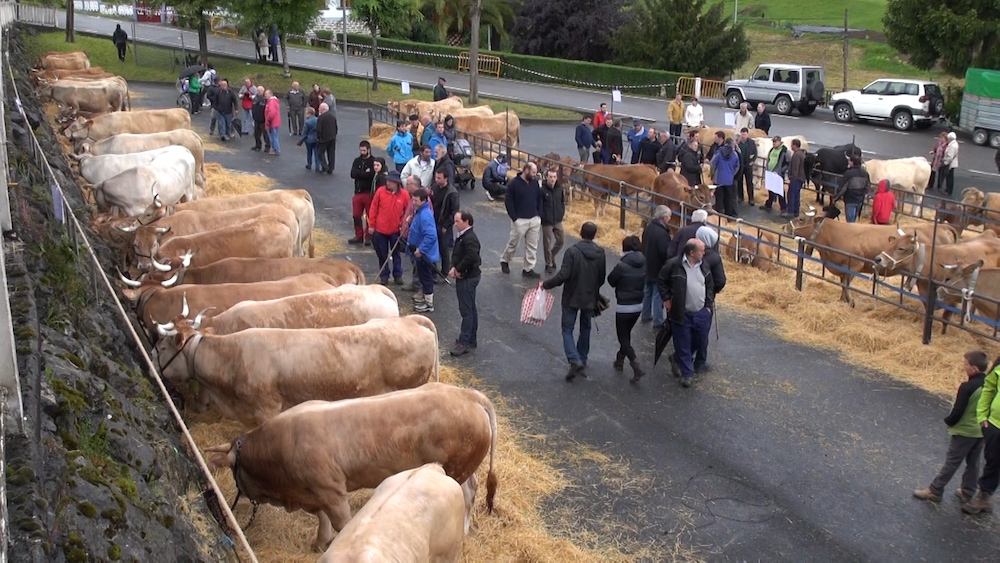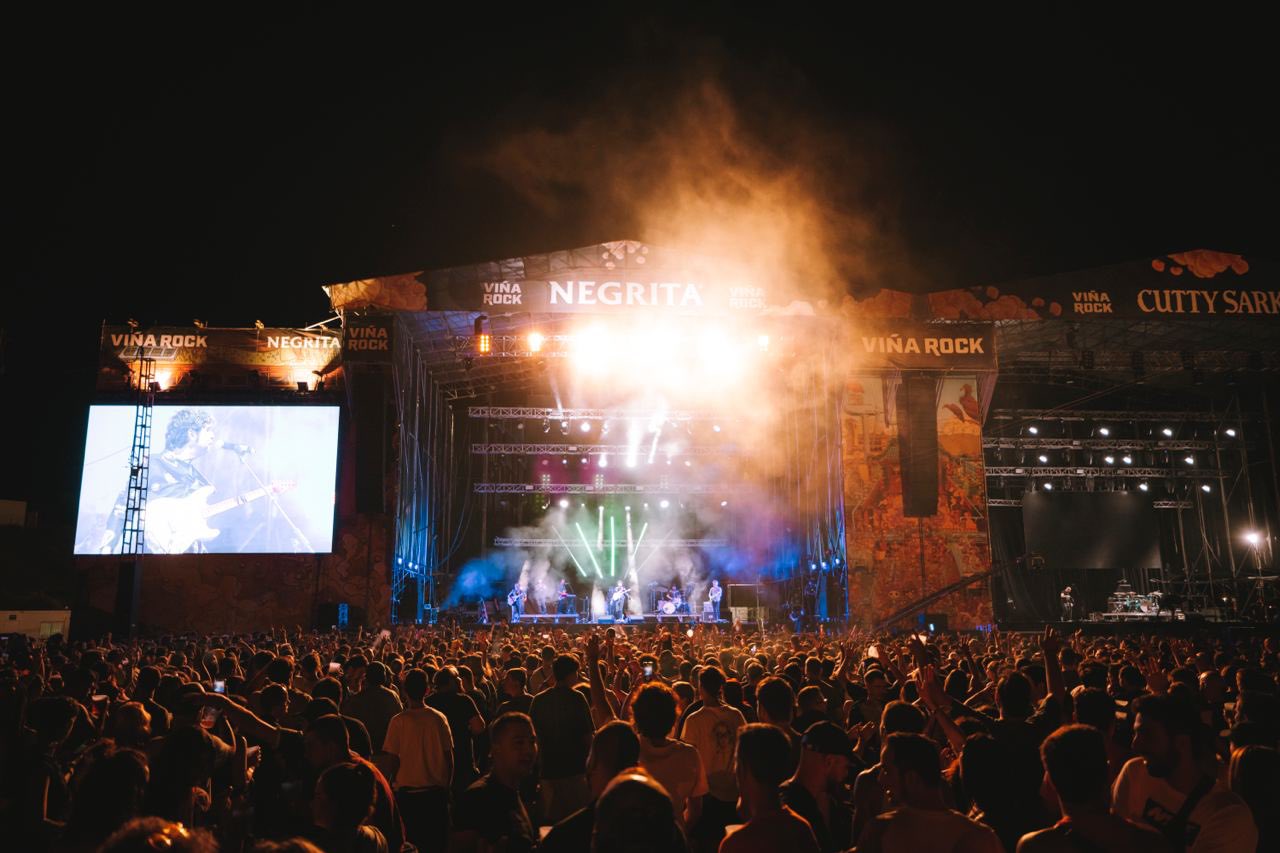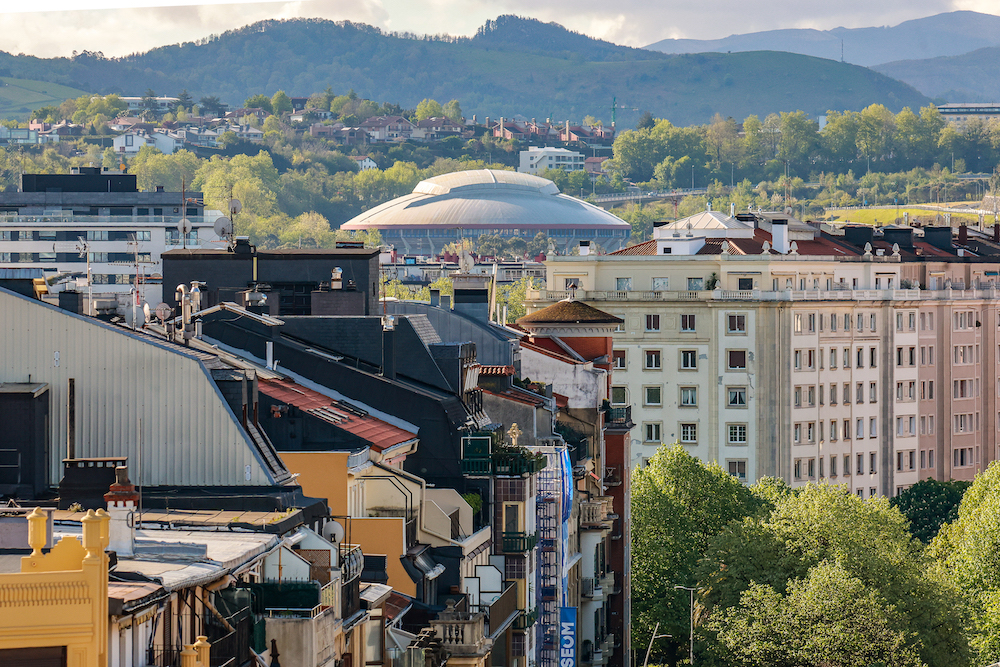Society
Environment
Politics
Economy
Culture
Basque language
Feminism
Education
International
Opinion
friday 16 may 2025
Automatically translated from Basque, translation may contain errors. More information here. 
The ashes of a generation
- The play Ashes has just been presented by Le Petit Théâtre de Paine, in collaboration with Artedrama and Dejabu. After being assembled and premiered at the Piedra Xuria in Luhoso, in November they will cross the Basque Country, distributing from stage to stage the ashes of the dreams of a whole generation.
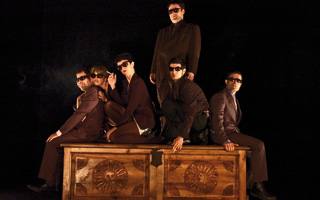
Ainhoa Resano
Odei is dead. Seventh member of a group of friends. The box containing his body can be seen in the center of the stage. Soon after receiving the news, his friends will be dressed in rigid suits, his eyes glazed in black. Six people from the same generation will give you the final goodbye of a busy party that will break the air of the stage and fill it from song to song. In the end we won’t know if they are talking about Odei or the ashes of their dreams, ideas and memories of their youth.
By Ainara Gurrutxaga, Ander Lipus, Manex Fuchs, Miren Castañaga, Urko Redondo, Ximun Fuchs. All the actors we've been able to see from stage to stage. Igor Elortza and Unai Letraaga have written the words of the play thanks to improvisation. There are many things that unite them in addition to the theater: they belong to the same generation and their ghosts have been invited to the stage in the middle of the party. According to Ximun Fuchs, this was the same as the seed of Ash: “What have we done with our dreams? It can be said that the Basque Country is almost the last place in Europe where the ideology of the 70s has been passed on to our generation. You almost still believe in the revolution. In Spain and France our generation is cynical, maybe they have some ecology. What has our generation retained from what it has received? In fact, there is a distance between having these ideas and living in reality.” It is
from this thread that the characters’ minds, intentions, relationships and failures will be combined. Each character has its own profile: the one who lives mortgaged, the one who has remained as in his youth, the Basque traveler, the one who has not moved from the village, the perfect Basque... However, we can all have something of each one. “We know each other somewhere, even as an audience.” The way in which
the box containing the body is used in the play is directly related to the Kasarranka around Lekeitio, and in addition to using its symbology, Odei itself could also be a metaphor. “What is this good of our generation that we burn when we are 35 years old, what does our generation abandon?” There is
reflection at the bottom of the Ashes, but above all it is a theater, alive and dynamic. For Ximun, they will not offer an answer. “We don’t have enough distance, several doors close and then reopen. In the end, it’s our job, that’s our job.” The clown or even the buffoon, as Manex says: “We make fun of ourselves. Whatever the case, even if we had distance, let’s say 40 years from now, the young people of that time would send us to hell. If people laugh because of our cruelty, that will bring a series of answers.”
Ximun Fuchs has not only worked as an actor, but has also directed the play. The monologue Juglarea, the whore and the madman, which he represented, can be remembered by the spectator, since the box was then also the axis of the stage. Manex suggests that the theater is because the theater is in motion, because it is in evolution. “There’s a lot of other stuff, too.” In Juglar Ximun collected three monologues, each in a dialect. In the case of Cinderella, the relationship between theater and Basque has been deepened, since each character has its own dialect. According to Ximun, at first they tried to talk to Batu and Zuka. “There was something missing in the words, after all, that each one gave it from him. The path we have taken implies on the one hand that a metaphorical tone is strengthened, because there will not be many such squads in the Basque Country. I think that’s what the audience listens to. Finally, we all work together, and that brings us closer to work.” From the West, from the Centre, from Navarre to
Lapari, from Navarre to Zuber and united in the same group of friends. As Manex recalls, they have experienced similar situations: “In the schools in the north there were Zuberos, Navarrese, thieves... and also Biscayans, who were multiple children of refugees. Sometimes there were new words we learned, but we never had language problems.” In any case, the work of Igor Elortza and Unai Sourceaga has been
fundamental in shaping what the actors have created during the improvisations. Ximun admits that they had already made a kind of script based on the work of the actors. “We soon realized that we are not very good writers. When such a group of friends come together, there are ways of speaking among them; a common story had to be perceived in the way of speaking. The warmth that comes with proximity, the circuses...” In order to continue with the soul of the play, they sought the bertsolaris of their generation to carry out this work. “The theatrical forms of the North have a relationship with bertsolarismo in the forms and in the relationship with
the public.” And the song is not far from the verse either, because the actors will connect the action with melody. “The songs are the thread throughout the theater. That’s what keeps us together, that allows us to rebuild a group, and at the same time that memory work is done: there are traditional songs, and on the other hand Kortatu, Hertzaines, Itoiz, La Polla... when they sing, memories come to all of us.”
Fuchs has directed a group of actors who have worked for years on the path of aesthetics and languages of their own. Lipus and Castañaga with the Imaginary Theatre, among others, staged the play Flores de Babylon just a year ago. Redondo and Gurrutxaga have created a series of shows within the Dejabu doll laboratory, the last of which is the Man is not a bird and the Last Port. The Fuchs were immersed in the theatre by Antton Luku, Ximun has collaborated as a director for eight years in the school theatres promoted by him, and Manex co-founded the Empty Chair with Lipus. It does not seem easy to combine actors with a deep personal trajectory, but as Ximun says it is a matter of decision: “If there is no danger, there is little pleasure for the actor. The actor who does not advance goes to the liver. It takes anticipation to discover new worlds. That's what we're trying to do. The direction is drawing, the painting, but the actors make the theater.” According to
Ximun, there are two axes in the form of the representation of Cinderella: one naturalist and the other more modern. “We are all dressed up with a tie. The symbolism of this is that we are now adults, socialized, normal people... even though we really have a hard time accepting it (ha ha).” They have taken the use of the actor’s crown from the traditional forms of the theatre, and the way to break it and highlight its contradictions.
Those of us who have the habit of watching the theatre are perhaps too accustomed, if one can get used to it, to seeing works with little soul staged in artificial Basque. Cinderella may be able to get out of it, but Manex perfectly sums up what's at the base: “When the different groups work together there are multiple intellectual intentions full of enthusiasm and values of doing theater in the Basque Country, but at the same time we have that complicity on the board among some drunken lovers of the hostel, we have an astapito of pleasure working together”.
By Ainara Gurrutxaga, Ander Lipus, Manex Fuchs, Miren Castañaga, Urko Redondo, Ximun Fuchs. All the actors we've been able to see from stage to stage. Igor Elortza and Unai Letraaga have written the words of the play thanks to improvisation. There are many things that unite them in addition to the theater: they belong to the same generation and their ghosts have been invited to the stage in the middle of the party. According to Ximun Fuchs, this was the same as the seed of Ash: “What have we done with our dreams? It can be said that the Basque Country is almost the last place in Europe where the ideology of the 70s has been passed on to our generation. You almost still believe in the revolution. In Spain and France our generation is cynical, maybe they have some ecology. What has our generation retained from what it has received? In fact, there is a distance between having these ideas and living in reality.” It is
from this thread that the characters’ minds, intentions, relationships and failures will be combined. Each character has its own profile: the one who lives mortgaged, the one who has remained as in his youth, the Basque traveler, the one who has not moved from the village, the perfect Basque... However, we can all have something of each one. “We know each other somewhere, even as an audience.” The way in which
the box containing the body is used in the play is directly related to the Kasarranka around Lekeitio, and in addition to using its symbology, Odei itself could also be a metaphor. “What is this good of our generation that we burn when we are 35 years old, what does our generation abandon?” There is
reflection at the bottom of the Ashes, but above all it is a theater, alive and dynamic. For Ximun, they will not offer an answer. “We don’t have enough distance, several doors close and then reopen. In the end, it’s our job, that’s our job.” The clown or even the buffoon, as Manex says: “We make fun of ourselves. Whatever the case, even if we had distance, let’s say 40 years from now, the young people of that time would send us to hell. If people laugh because of our cruelty, that will bring a series of answers.”
Five dialects and united in the same gang
Ximun Fuchs has not only worked as an actor, but has also directed the play. The monologue Juglarea, the whore and the madman, which he represented, can be remembered by the spectator, since the box was then also the axis of the stage. Manex suggests that the theater is because the theater is in motion, because it is in evolution. “There’s a lot of other stuff, too.” In Juglar Ximun collected three monologues, each in a dialect. In the case of Cinderella, the relationship between theater and Basque has been deepened, since each character has its own dialect. According to Ximun, at first they tried to talk to Batu and Zuka. “There was something missing in the words, after all, that each one gave it from him. The path we have taken implies on the one hand that a metaphorical tone is strengthened, because there will not be many such squads in the Basque Country. I think that’s what the audience listens to. Finally, we all work together, and that brings us closer to work.” From the West, from the Centre, from Navarre to
Lapari, from Navarre to Zuber and united in the same group of friends. As Manex recalls, they have experienced similar situations: “In the schools in the north there were Zuberos, Navarrese, thieves... and also Biscayans, who were multiple children of refugees. Sometimes there were new words we learned, but we never had language problems.” In any case, the work of Igor Elortza and Unai Sourceaga has been
fundamental in shaping what the actors have created during the improvisations. Ximun admits that they had already made a kind of script based on the work of the actors. “We soon realized that we are not very good writers. When such a group of friends come together, there are ways of speaking among them; a common story had to be perceived in the way of speaking. The warmth that comes with proximity, the circuses...” In order to continue with the soul of the play, they sought the bertsolaris of their generation to carry out this work. “The theatrical forms of the North have a relationship with bertsolarismo in the forms and in the relationship with
the public.” And the song is not far from the verse either, because the actors will connect the action with melody. “The songs are the thread throughout the theater. That’s what keeps us together, that allows us to rebuild a group, and at the same time that memory work is done: there are traditional songs, and on the other hand Kortatu, Hertzaines, Itoiz, La Polla... when they sing, memories come to all of us.”
Modes of Theatre
XimunFuchs has directed a group of actors who have worked for years on the path of aesthetics and languages of their own. Lipus and Castañaga with the Imaginary Theatre, among others, staged the play Flores de Babylon just a year ago. Redondo and Gurrutxaga have created a series of shows within the Dejabu doll laboratory, the last of which is the Man is not a bird and the Last Port. The Fuchs were immersed in the theatre by Antton Luku, Ximun has collaborated as a director for eight years in the school theatres promoted by him, and Manex co-founded the Empty Chair with Lipus. It does not seem easy to combine actors with a deep personal trajectory, but as Ximun says it is a matter of decision: “If there is no danger, there is little pleasure for the actor. The actor who does not advance goes to the liver. It takes anticipation to discover new worlds. That's what we're trying to do. The direction is drawing, the painting, but the actors make the theater.” According to
Ximun, there are two axes in the form of the representation of Cinderella: one naturalist and the other more modern. “We are all dressed up with a tie. The symbolism of this is that we are now adults, socialized, normal people... even though we really have a hard time accepting it (ha ha).” They have taken the use of the actor’s crown from the traditional forms of the theatre, and the way to break it and highlight its contradictions.
Those of us who have the habit of watching the theatre are perhaps too accustomed, if one can get used to it, to seeing works with little soul staged in artificial Basque. Cinderella may be able to get out of it, but Manex perfectly sums up what's at the base: “When the different groups work together there are multiple intellectual intentions full of enthusiasm and values of doing theater in the Basque Country, but at the same time we have that complicity on the board among some drunken lovers of the hostel, we have an astapito of pleasure working together”.
“Errautsak” irakurtzeko moduak
Antzezlanak berez kontatzen eta iradokitzen duenetik harago, bada lerro arteko irakurketa ugari ere: euskaraz sortua da, euskalkia aintzat hartuz, testuaren kalitatea bilatuz baina, era berean, sormen prozesutik abiatuta eta ez testu itxi batetik. Lengoaia propioen bila dabiltzan taldeak elkartu dira lanerako, Harri Xuri bezalako espazio batean lan egin dute… iraultza betean ez bada, iraultza nahian hazitako Errautsakeko belaunaldi horrek agian bere buruari trufa eginez baino ezin du bere aburua serio hartu, baina ekintzen bidez mintzatzeko gaitasunik badu oraindik.
Garaian garaikoa, izan ere belaunaldi bakoitzak bere moduak topatu behar baititu. Hori bai, Errautsak oholtzan harrapatzeko adi egin beharko zaio so egutegiari: azaroan emanaldi ugari eskainiko dute, ostera bolada batez desagertzeko. Otsailean bueltatzeko asmoz, ez baitira agenda errazekoak. Oraingoz, pertsonaiekin batera ostatu, kanposantu, plaza eta frontoietan gaua zeharkatzeko hitzorduak topatuko dituzue hemen: www.errautsak.com.
Garaian garaikoa, izan ere belaunaldi bakoitzak bere moduak topatu behar baititu. Hori bai, Errautsak oholtzan harrapatzeko adi egin beharko zaio so egutegiari: azaroan emanaldi ugari eskainiko dute, ostera bolada batez desagertzeko. Otsailean bueltatzeko asmoz, ez baitira agenda errazekoak. Oraingoz, pertsonaiekin batera ostatu, kanposantu, plaza eta frontoietan gaua zeharkatzeko hitzorduak topatuko dituzue hemen: www.errautsak.com.
Most read
Using Matomo
#2
Unai Lomana Uribezubia
#4
Amets Aranguren Arrieta
#5
Hamaika Telebista
Newest
2025-05-16
Enbata
Batera resumes its dynamic in favor of the Territorial Community of the Northern Basque Country
On May 10, in Ezpeleta, the citizen platform Juntos revives the dynamic in favor of the Territorial Community. Some 120 participants in the General Regenerative Congress have laid the foundation for the platform.
2025-05-16
Unai Lomana Uribezubia
The Court of Appeal awards the sentence against the defendants of Marién to 8,742 euros
The militants of the collective Ostia will have to pay the company Bouygues 8,742 euros and another 2,000 euros for the expenses of the lawyers. In the act of disobedience carried out in December 2022, they have been punished for having tarnished a model of this promoter.
2025-05-16
Elhuyar
European cities are failing to adapt to climate change
The BC3 research centre on climate change has confirmed that European cities are falling behind in climate change adaptation measures. In fact, joint research with other international centers has shown that almost 70% of climate adaptation plans are unfunded. According to the... [+]
2025-05-15
Unai Lomana Uribezubia
The Pensioners’ Movement of the Basque Country presents 145,142 signatures
The campaign to dignify public pensions has collected 145,142 signatures since its launch at the beginning of the year and aims to equip at least the lowest pensions with the minimum interprofessional wage. The Pensioners Movement of the Basque Country (EHPM) has registered the... [+]
2025-05-15
Unai Lomana Uribezubia
Ask to join Amnesty Day on 7 June
The "anti-repressive" organization has organized an Amnesty Day on June 7 in Senpe. To proclaim the day, a full day program is organized. Round tables have been organized with other international organizations and the Carpentry Committee.
2025-05-15
ARGIA
The Ametzagaiña Group needs a computer scientist specialized in artificial intelligence to guide projects focused on the Basque language
The Ametzagaiña group is made up of LUZ, the communication company iAmetza, the Antza printing house and the software cooperative ADUR.
2025-05-15
ARGIA
The Fair Period
Maddi Sarasua’s book “In the Truths of the Bihar” kari, poetry recital in Berttoli de Urruña on Friday
The Fair, which started on the occasion of the Ciboure Fair, continues in the Basque Country North and this Friday you can enjoy a musical recital of poems at the Berttoli Cultural Association of the Basque Urruña at 19:00: The program is based on the wings of the Bihar written... [+]
2025-05-15
ARGIA
The newly launched Euskaraldia wants to regain the illusion
It will be from May 15th to 25th. This is the fourth edition and the organizers aim to make this year more “popular and exciting”. In fact, in the third edition they noticed a decrease, unable to raise their heads from the Basque Language during the pandemic. On Thursday... [+]
2025-05-15
Eneko Imaz Galparsoro
Sara organizes the initiative 'Until the Puzzle is Completed', which will run through 29 villages during the weekend
The initiative starts on Saturday from Lesaka and ends on Sunday in Pamplona.To demand a definitive solution and to claim the rights of the prisoners who still have to make their way home, they will travel 544 kilometers in total. The launch of the initiative took place on... [+]
2025-05-15
Xabier Letona Biteri
Negotiations on the Carpentry case
The defendants have not accepted the civil liability demanded by the Palacio de Aroztegua and on Monday the trial will begin
For months now, the prosecutor’s office, the defense and the private prosecution – Palacio de Arozteguia SM – have been negotiating not to proceed with the trial. There was a basic agreement, but the Carpinteria Solidarity Committee has announced in a press release that it... [+]
2025-05-15
Eneko Imaz Galparsoro
On the 77th anniversary of the Nakba, Israel kills 74 Palestinians in Gaza, including a journalist
77 years after the newly created State of Israel forcibly occupied about 80% of Palestine, Tel Aviv has killed 74 people in attacks on Gaza between Wednesday and Thursday. Among those killed is journalist Hassan Samour, the 230th journalist killed by Israel since October 2023... [+]
2025-05-15
Estitxu Eizagirre
Day of the Farmers
The Provincial Council of Gipuzkoa meets to denounce the exclusion of organic farmers from a subsidy
Today, May 15, is San Ixidro, Farmers’ Day. The Wood Ta Kandela farmer’s action denounces the exclusion of organic farmers from the subsidy to increase the cultivated area. That is why dozens of people have gathered in front of the Provincial Council at 12:00. It recalls... [+]
2025-05-15
Josebe Blanco Alvarez
Location of San Ixidro
This year I have no special illusions for the day of San Ixidro. I can't find the environment. Look around and have a great atmosphere. I have had to put my head to work in search of warmth, and look where, I have been exposed to the smiles of friends who have been waiting for... [+]
2025-05-15
Gedar
A fund for the State of Israel takes over most of the music festivals in the Spanish state
KKR acquired in January the promoter Superstruct, which among others promotes festivals such as Sónar, Viña Rock or Resurrection Fest. The fund has been marked by its participation in real estate activities linked to the colonization of Palestine and in the Israeli... [+]
San Sebastian has been declared a high voltage zone by the Basque Government
It will be published definitively in July in the Official State Gazette (BOE) and is the first capital of the Southern Basque Country to be named.
Eguneraketa berriak daude









